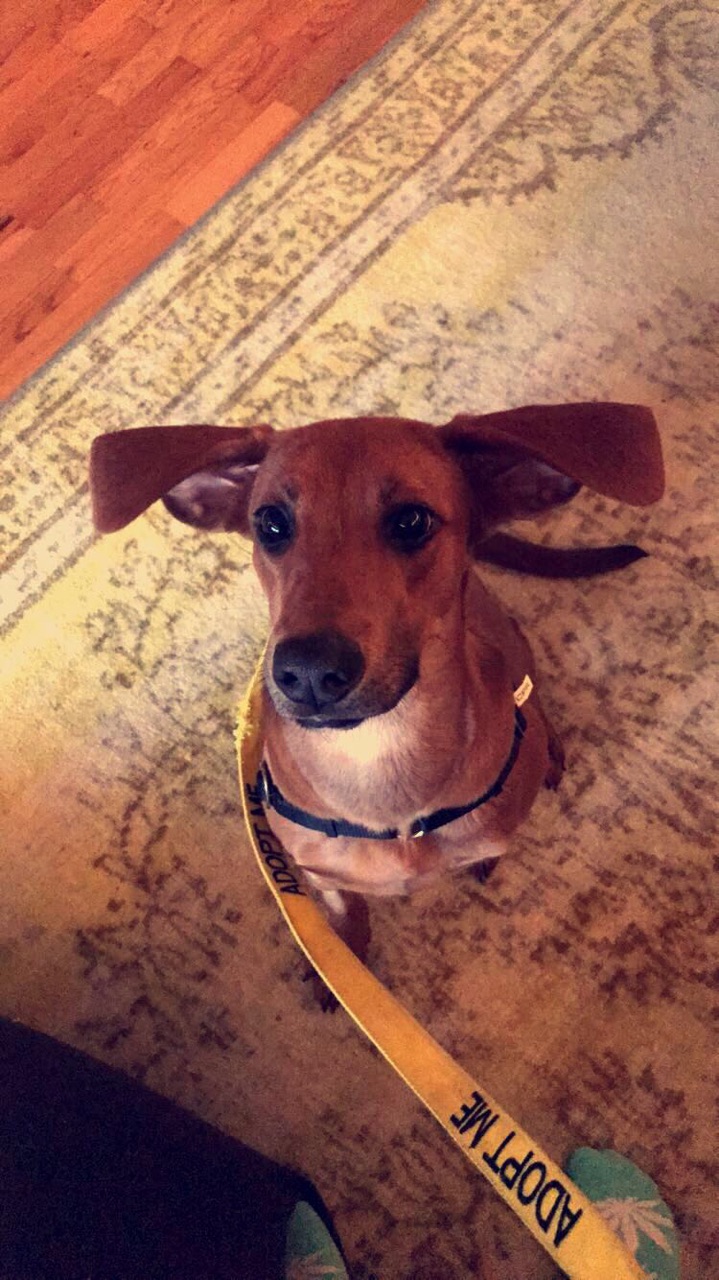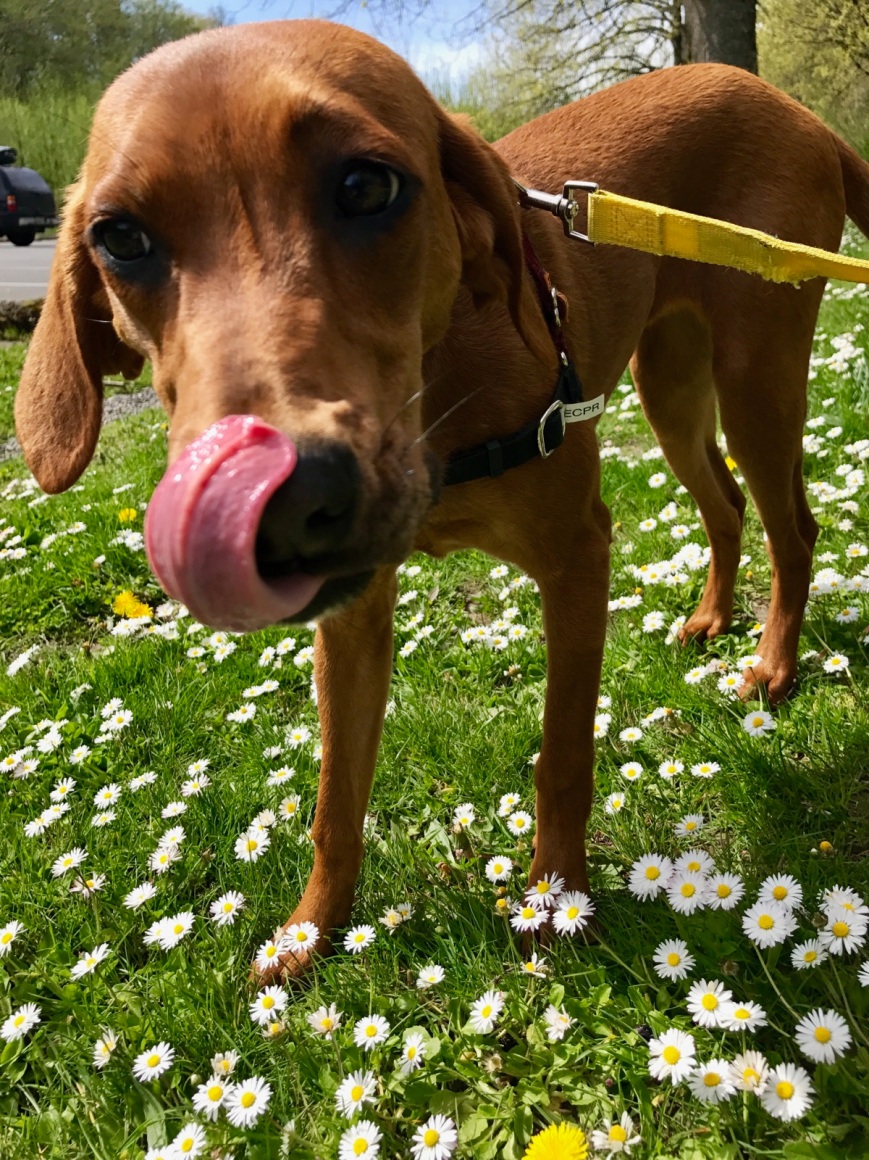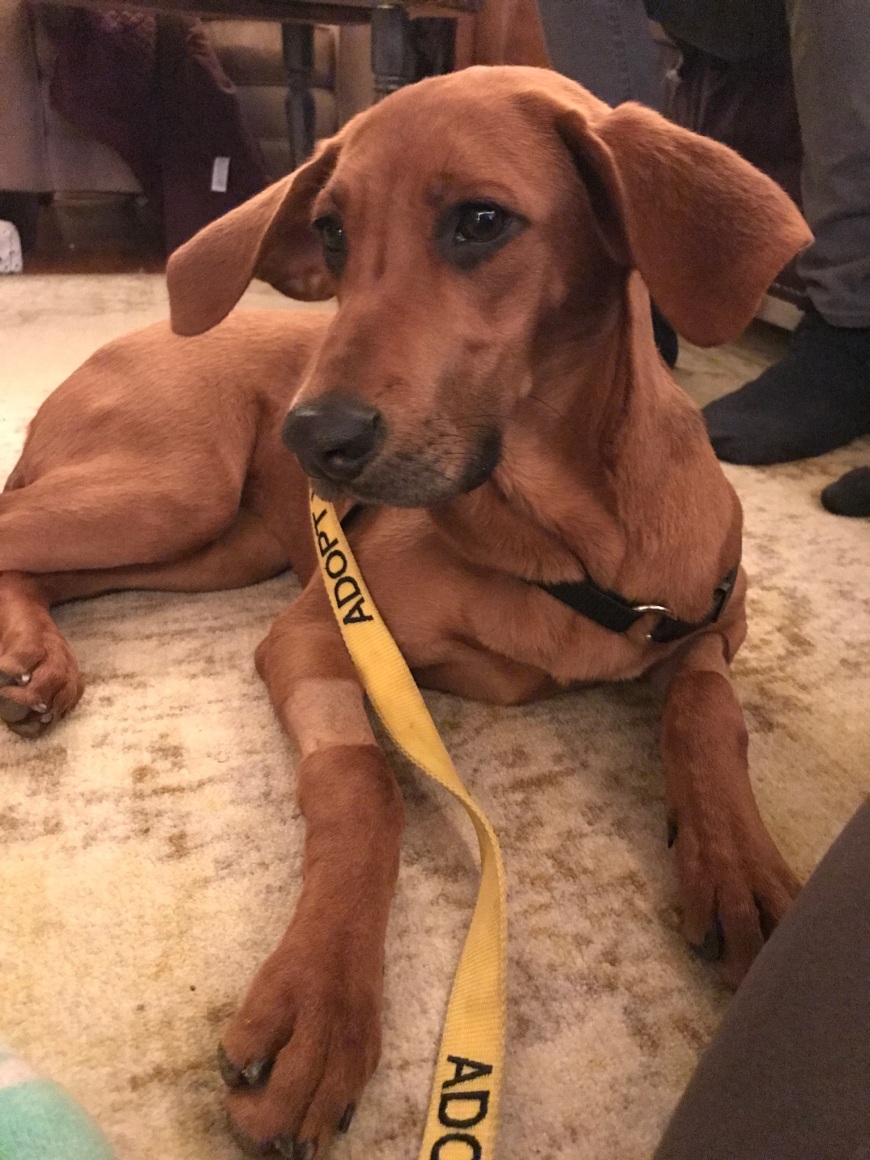Fostering puppies can be a very rewarding experience. Providing an in-home experience to an animal to relieve it from living in a shelter can enhance not only their life, but yours!
When taking a dog into your home, you should look beyond the simple feedings and walks, and seriously consider some quality training for each dog you care for.
Enter Piper.

Piper is our latest foster pup. We’ve had her for just over three months now while she awaits her forever home. Piper is a 9 month old Redbone Coonhound Mix, with the typical energy and stimulation needs as any other puppy of her age. After doing some research, turns out Coonhounds are a sensitize, yet stubborn breed that need appropriate training or they can become bored and destructive. To compound our issues, however, is that Piper has a history of seizures that are more prone to occur if she doesn’t get the proper physical and mental stimulation during the day. Add on the fact that a puppy that lounges around all day doing nothing is bound to wake you up at four in the morning needing to go to the bathroom, and we have been set up with a 45 pound pain in the rear.
Solutions needed to be found. Piper’s energy levels had started to put a strain on our patience, and the lack of sleep with her waking in the middle of the night was making it rather difficult to get anything productive done during our own work days. We needed to incorporate some more mental games to help get Piper through the day. Enter scent training! Being a hound, Piper has a VERY active nose, and her tracking instincts are obvious anytime we enter a dog park or let her out into a back yard. If we can harness those instincts into something constructive, then we could give her tools to become a better puppy!
Training a puppy can start at any age. A dog is never too young to start learning basics like “wait” or “touch”. And there is a lot to be said about proper socialization for your pup from an early age. Hound dogs are born with tracking instincts, so it’s never too early to start with their scent training either!
Setting the Stage:
Starting scent training is very easy. Find an area in your home, maybe a side bedroom or the kitchen, where you can scatter the puppies kibble. Spreading the food around the room means your pup needs to use its’ nose to sniff out where the food is. After awhile they catch on that the food is in different places, and you’ll see their nose rise in the air searching for new food piles!
The trick is to keep it simple for the first week or two. You can condense the piles to make it harder to find, and start hiding kibble under blankets, in boxes, etc. Be creative! But make sure to move at your puppy’s pace so they can learn without becoming frustrated!

Incorporating Scent:
Your pup will inevitably catch on to the kibble hiding game, and they’ll be turning over pillows and waste baskets to find the morsels of food you obviously hid around the house! To make it more of a challenge, you can start replacing food with scents.
Hopefully you’ve been doing clicker work with your pup to start getting them acquainted with the rewards of a job well done! If you haven’t done so, here’s a pretty good guide on charging a clicker.
Grab your clicker, along with an Altoid tin (or some other small metal container, I like metal because it’s durable against mouthy dogs like Piper), some high value treats (like string cheese), and a strong, dog friendly scent (I prefer peppermint since it usually stands out against other smells).
Poke a few holes in the top of an Altoid tin, place a drop of the scent inside the tin to lure the dog, and place the tin around with the different piles of kibble. Whenever the pup finds the kibble, mark it with a clicker, and reward the puppy with a special treat (something really stinky to get them excited!). After a while, you will find that your pup searches out the scents instead of the food, because they know a higher value reward is on the way. Every time your pup finds the scent box, click and reward. This may take some time, but patience will set the stage for more fun games with your pup once they get the hang of it!
Take it Outside:
As soon as your pup gets the hang of finding the food or scents in the house, take the fun outside! In the back yard, in the garage, heck even in the car, you can replicate the same exercises by hiding food or tins of the scent around the area you are in, and when you pup finds the target, mark it and reward!
Hide-n-seek:
Ever wanted to teach your dog to find you at the dog park or around the house? Scent work translates great with these “find it” games. Hide yourself in a different room of the house, and when your ready, tell your pup to find you. As soon as they sniff you out, flood them with praise and reward! This is an excellent way to keep your dog engaged at the dog park to avoid them running around ignoring you!
The beauty of these games is that they’re easy to incorporate into any regular training routine and work really well on most of the basic obedience needs of your pup. In reality, we should never be feeding dogs out of basic food dishes. They’re boring! I’d rather see people scatter kibble on the floor and make their pups hunt for the pieces, at least that way they can’t eat too fast! Scent hunting gives an amazing amount of mental stimulation that dogs desperately crave, and with a dog like Piper, you are tapping into a natural instinct that focuses in on one of her most basic urges. This ends up being a win for everyone!

Although hound breeds are more prone to want to track scents and trail targets, scent work can be done with any dog! I have used these games with Pickle in the past and she loves them! The important part is to have fun!
For more in-depth steps on how to teach scent training, there are countless Google and YouTube pages that are helpful! Happy sniffing!

Published by